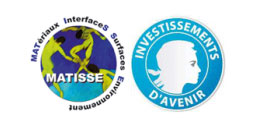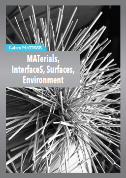Investigation of Calcium Oxalate Crystallization under Microfluidic Conditions for the Understanding of Urolithiasis

Axe 1 - Biominéralisation
Thèse de Karol Rakotozandriny
Appel à projet 2016.
Soutenance de thèse le 27 septembre 2019 à 9h30 - Salle 2 du Collège de France
Laboratoires co-porteurs
- Laboratoire de Chimie de la Matière (LCMCP)
Directeur de thèse : Christian Bonhomme - Physicochimie des Electrolytes et Nanosystèmes interfaciaux (PHENIX)
Co-Directeur de thèse : Ali Abou Hassan
Keywords
calcium oxalate - hydroxyapatite - microfluidics - in situ characterization - growth kinetics
Projet de recherche (abstract)
Over the past decades, the increase in kidney stone formers has raised the importance to understand the biomineralization process responsible for urolithiasis. Calcium oxalate (CaOx) crystallization – kidney stone main inorganic compound – has largely been characterized under batch synthesis conditions that cannot be regarded as biomimetic with respect to the microscale environment in the kidney and to the urinary flow.
In this work, we used a reversible microchannel to mimic the collecting duct in the nephron where CaOx stones can form due to supersaturated levels in calcium and oxalate ions. Within the channel, CaOx crystallization was induced under co-laminar mixing of Ca2(aq) and Ox2-(aq) ions matching pathological concentrations – i.e. hypercalciuria and moderate hyperoxaluria. Scanning electron microscopy and Raman spectroscopy were used to support our investigations. They showed that CaOx crystals precipitate in a mixture of monohydrated whewellite (CaC2O4.2H2O, COM) and dihydrated weddellite (CaC2O4.2H2O, COD) in the microchannel, similar to what is observed by the physicians. In situ information on the kinetics of CaOx crystal growth could be acquired in our microfluidic system. They confirmed the effect of the hydrodynamic and chemical conditions on the growth kinetics and the final chemistry (phase, shape) of the formed CaOx crystals. In a trial to achieve a more complex biomimetic model (formation of kidney stones on a Randall’s plaque), hydroxyapatite was grown also in the microchannel and the CaOx crystal formation was investigated.
Conférences et interventions
- FlowMat workshop
Paris, Juin 2019
Communication orale - MRS Spring Meeting
Phoenix (AZ), Avril 2019
Communication orale - Division du Solide de la Société Chimique de France
Montpellier, Octobre 2017
Communication orale - Flow17
Paris, Juillet 2017
Poster presentation
Egalement dans la rubrique
- Thèse de Jonathan Baptista
- Thèse de Florian Beaugnon
- Thèse d'Emmanuelle de Clermont Gallerande
- Thèse d'Elise Duquesne
- Thèse de Cyrine Ernandes
- Thèse d'Ali Fakih
- Thèse d'Amaury Fau
- Thèse de Camille Lagoin
- Thèse de Miléna Lama
- Thèse de Danilo Longo
- Thèse de Lorela Masci
- Thèse de Bertille Martinez
- Thèse d'Elise Médina
- Thèse d'Elisa Meriggio
- Thèse d'Estelle Palierse
- Thèse de Sofiane Schaack
- Thèse de Lionel Tinat
- Thèse de Hancheng Yang
- Thèse de Dan Zhao
MATISSE en chiffres
- 4 disciplines : Chimie, Physique, Sciences de la Terre, Patrimoine
- 400 permanents
Contact
Direction
Florence Babonneau
Administration
Communication
Emmanuel Sautjeau



